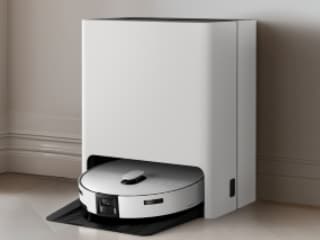- Home
- Science
- Science News
- Ceres Dwarf Planet Is an ‘Ocean World’ With Salty Water Underground, NASA Data Suggest
Ceres Dwarf Planet Is an ‘Ocean World’ With Salty Water Underground, NASA Data Suggest
Ceres, located between Mars and Jupiter, raises interest among scientists as a possible outpost for life.

Photo Credit: NASA
This mosaic of Ceres' Occator Crater is composed of images NASA's Dawn mission
Ceres, the largest object in the asteroid belt between Mars and Jupiter, is an "ocean world" with a big reservoir of salty water under its frigid surface, scientists said in findings that raise interest in this dwarf planet as a possible outpost for life.
Research published on Monday based on data obtained by NASA's Dawn spacecraft, which flew as close as 22 miles (35 km) from the surface in 2018, provides a new understanding of Ceres, including evidence indicating it remains geologically active with cryovolcanism - volcanoes oozing icy material.
The findings confirm the presence of a subsurface reservoir of brine - salt-enriched water - remnants of a vast subsurface ocean that has been gradually freezing.
"This elevates Ceres to 'ocean world' status, noting that this category does not require the ocean to be global," said planetary scientist and Dawn principal investigator Carol Raymond. "In the case of Ceres, we know the liquid reservoir is regional scale but we cannot tell for sure that it is global. However, what matters most is that there is liquid on a large scale."
Ceres has a diameter of about 590 miles (950 km). The scientists focused on the 57-mile-wide (92-km-wide) Occator Crater, formed by an impact about 22 million years ago in Ceres' northern hemisphere. It has two bright areas - salt crusts left by liquid that percolated up to the surface and evaporated.
The liquid, they concluded, originated in a brine reservoir hundreds of miles (km) wide lurking about 25 miles (40 km) below the surface, with the impact creating fractures allowing the salty water to escape.
The research was published in the journals Nature Astronomy, Nature Geoscience, and Nature Communications.
Other solar system bodies beyond Earth where subsurface oceans are known or appear to exist include Jupiter's moon Europa, Saturn's moon Enceladus, Neptune's moon Triton, and the dwarf planet Pluto.
Water is considered a key ingredient for life. Scientists want to assess whether Ceres was ever habitable by microbial life.
"There is major interest at this stage," said planetary scientist Julie Castillo of NASA's Jet Propulsion Laboratory, "in quantifying the habitability potential of the deep brine reservoir, especially considering it is cold and getting quite rich in salts."
© Thomson Reuters 2020
Is Nord the iPhone SE of the OnePlus world? We discussed this on Orbital, our weekly technology podcast, which you can subscribe to via Apple Podcasts, Google Podcasts, or RSS, download the episode, or just hit the play button below.
Get your daily dose of tech news, reviews, and insights, in under 80 characters on Gadgets 360 Turbo. Connect with fellow tech lovers on our Forum. Follow us on X, Facebook, WhatsApp, Threads and Google News for instant updates. Catch all the action on our YouTube channel.
Related Stories
- Samsung Galaxy Unpacked 2025
- ChatGPT
- Redmi Note 14 Pro+
- iPhone 16
- Apple Vision Pro
- Oneplus 12
- OnePlus Nord CE 3 Lite 5G
- iPhone 13
- Xiaomi 14 Pro
- Oppo Find N3
- Tecno Spark Go (2023)
- Realme V30
- Best Phones Under 25000
- Samsung Galaxy S24 Series
- Cryptocurrency
- iQoo 12
- Samsung Galaxy S24 Ultra
- Giottus
- Samsung Galaxy Z Flip 5
- Apple 'Scary Fast'
- Housefull 5
- GoPro Hero 12 Black Review
- Invincible Season 2
- JioGlass
- HD Ready TV
- Laptop Under 50000
- Smartwatch Under 10000
- Latest Mobile Phones
- Compare Phones
- OnePlus 15R
- Realme Narzo 90x 5G
- Realme Narzo 90 5G
- Vivo S50 Pro Mini
- Vivo S50
- OPPO Reno 15c
- Redmi Note 15 5G
- Redmi Note 15 Pro 5G
- Asus ProArt P16
- MacBook Pro 14-inch (M5, 2025)
- Infinix Xpad Edge
- OnePlus Pad Go 2
- Just Corseca Skywatch Pro
- Honor Watch X5
- Acerpure Nitro Z Series 100-inch QLED TV
- Samsung 43 Inch LED Ultra HD (4K) Smart TV (UA43UE81AFULXL)
- Asus ROG Ally
- Nintendo Switch Lite
- Haier 1.6 Ton 5 Star Inverter Split AC (HSU19G-MZAID5BN-INV)
- Haier 1.6 Ton 5 Star Inverter Split AC (HSU19G-MZAIM5BN-INV)

















